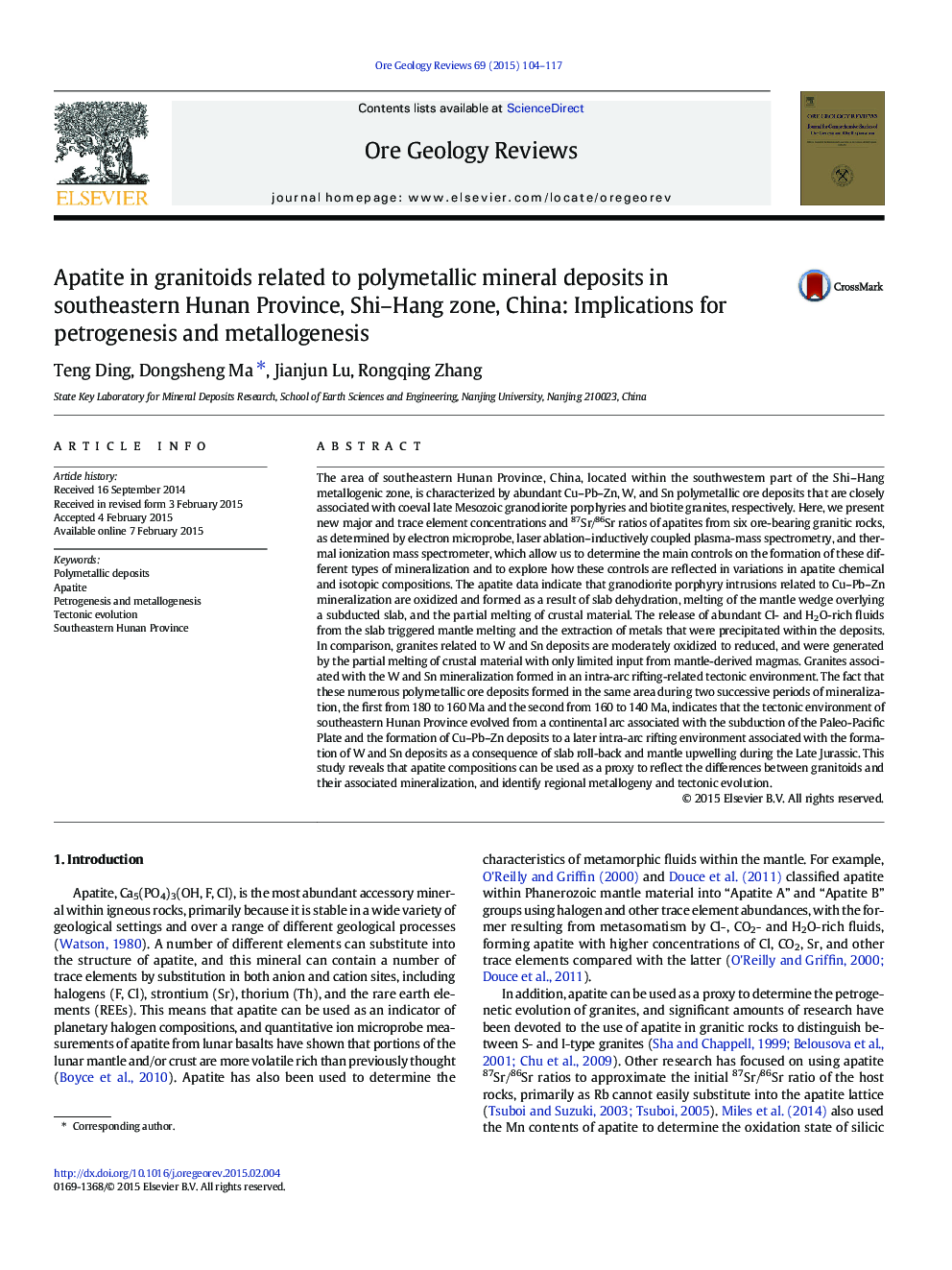| Article ID | Journal | Published Year | Pages | File Type |
|---|---|---|---|---|
| 4697311 | Ore Geology Reviews | 2015 | 14 Pages |
•Confirming the differences between granitoids can be reflected by variations in apatite compositions.•The composition of apatite reflects the factors controlling the different types of mineralization.•Apatite can be the proxy to identify regional metallogeny and tectonic evolution.
The area of southeastern Hunan Province, China, located within the southwestern part of the Shi–Hang metallogenic zone, is characterized by abundant Cu–Pb–Zn, W, and Sn polymetallic ore deposits that are closely associated with coeval late Mesozoic granodiorite porphyries and biotite granites, respectively. Here, we present new major and trace element concentrations and 87Sr/86Sr ratios of apatites from six ore-bearing granitic rocks, as determined by electron microprobe, laser ablation–inductively coupled plasma-mass spectrometry, and thermal ionization mass spectrometer, which allow us to determine the main controls on the formation of these different types of mineralization and to explore how these controls are reflected in variations in apatite chemical and isotopic compositions. The apatite data indicate that granodiorite porphyry intrusions related to Cu–Pb–Zn mineralization are oxidized and formed as a result of slab dehydration, melting of the mantle wedge overlying a subducted slab, and the partial melting of crustal material. The release of abundant Cl- and H2O-rich fluids from the slab triggered mantle melting and the extraction of metals that were precipitated within the deposits. In comparison, granites related to W and Sn deposits are moderately oxidized to reduced, and were generated by the partial melting of crustal material with only limited input from mantle-derived magmas. Granites associated with the W and Sn mineralization formed in an intra-arc rifting-related tectonic environment. The fact that these numerous polymetallic ore deposits formed in the same area during two successive periods of mineralization, the first from 180 to 160 Ma and the second from 160 to 140 Ma, indicates that the tectonic environment of southeastern Hunan Province evolved from a continental arc associated with the subduction of the Paleo-Pacific Plate and the formation of Cu–Pb–Zn deposits to a later intra-arc rifting environment associated with the formation of W and Sn deposits as a consequence of slab roll-back and mantle upwelling during the Late Jurassic. This study reveals that apatite compositions can be used as a proxy to reflect the differences between granitoids and their associated mineralization, and identify regional metallogeny and tectonic evolution.
Graphical abstractFigure optionsDownload full-size imageDownload as PowerPoint slide
